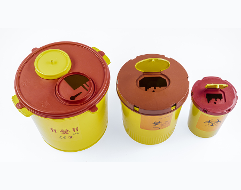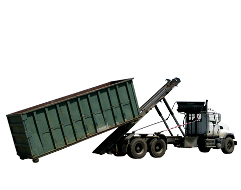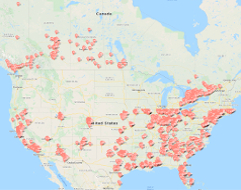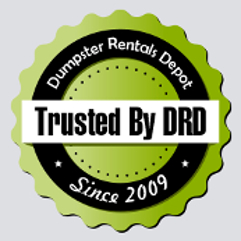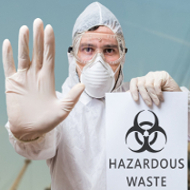Waste Disposal (kids edition)
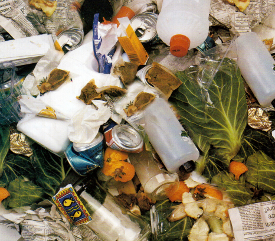
Waste from Homes and Offices
Trash from our homes and litter in the streets are just a tiny part of the garbage produced each year. Shops, schools, offices, and hospitals all produce garbage and dirty water, too.
Waste from Industry Power stations and chemical plants produce waste gases, while mines produce huge spoil heaps. There is waste, too, from farming when farmers grow crops or keep animals. A lot of this waste can be harmful to the environment if it is not disposed of carefully.
Using Resources Wisely
There are only so many natural resources, or raw materials, on the planet. People are wasting these resources by not using them carefully. We have to learn how to make good use of resources. one way forward is to recycle or reuse as much of our waste as possible. this helps reduce environmental damage and saves resources.
In the developed world, people have
their garbage collected. Each week, a
family of four throws away at least a
whole trash can full of waste.
Garbage Cans
It is easy to put refuse, or garbage, in a can. A garbage collector empties the can, now ready for you to fill it up again.
The amount of garbage people produce is increasing. This is mainly because more and more packaging material is used to protect items we buy. The bulk of garbage we throwaway is paper, cardboard, and garden-plant waste. Much of this could be recycled.
Valuable Garbage
Much of what we throwaway is valuable. In developing countries, many people cannot afford to throwaway plastic bags and bottles-things we take for granted. The poorest people pick through garbage, sorting out valuable materials that can be sold for recycling. They sell unwanted metal and plastic so other people can reuse it. Where wood is in short supply, people use old tires, bottles, and cans as building materials.
Holes in the Ground
Do you know where your garbage is taken? In many countries, garbage is taken to huge holes in the ground that were once quarries or gravel pits. These holes are called landfill sites.
Filling the Hole
Garbage is very bulky, so it is sometimes squashed at a refuse center before it reaches the landfill. In other places, bulldozers flatten the garbage on-site. Each week, the garbage is covered by a layer of soil. When the landfill is full, one last, thick layer of soil is scattered on top. Eventually, the land can be used for farming, housing, or industry.
Landfill Problems
Landfills are a cheap way of disposing of large amounts of garbage. But there are problems. The sites tend to be smelly and unattractive. The garbage attrcts disease-carrying pests such as mice, rats, and birds. High winds can blow letter onto the surrounding land.
Sometimes, poisonous chemicals leak into the soil and water supplies. To prevent this leakage, new landfill sites have to have special plastic liners.
Free Gas Supply
Most of the garbage in the landfill decays, or rots, over some weeks or months. As it does so, it releases a gas called methane. There is a risk of explosion if the gas is allowed to build up underground, so pipes carry the methane to the surface, where it ascapes into the air. Sometimes the gas is burned in boilers to produce heat.
Waste to Energy
As landfill sites fill up, people have to find alternative ways of getting rid of their garbage. One way is to burn the garbage in special ovens called incinerators.
Burning Garbage
Garbage is made up of materials that release energy when they are burned, such as paper and plastic. This means that garbage can be the different used as a fuel. First, the garbage is sorted so that all the valuable and recyclable material is removed-for example, metal and glass. Then the rest of the waste can be burned in the incinerator.
Heating Up
The temperature inside the incinerator needs to reach about 1,830°F (1,000 °C). If the temperature is too low, poisonous fumes can pollute the air. The heat energy given off by the burning garbage is used to generate electricity or to heat local homes and businesses. The small amount of waste left in the ovens can be used as a filler in road building.
Some of the huge amounts of garbage can be compressed into little blocks known as refuse derived fuel (RDF) pellets. These pellets are sold as a fuel for burning on fires and in boilers.
Producing Biogas
The rotting wastes in landfill sites produce methane gas. On a much smaller scale, methane can be produced from human, animal, and food wastes. The organic wastes are dumped in an underground pit, where they decay. As they do this, they release gases, including methane gas, just as in landfill sites. This gas, called biogas, can be piped to homes to be used as a fuel for heating water and cooking.
Waste from Energy
Electricity is an essential part of our lives. We use it to power appliances such as lights, televisions, and computers. But electricity production creates various types of waste.
Generating Electricity
Electricity is produced in power stations. Many power stations burn fossil fuels such as coal, gas, and oil, which release heat energy. The burning fuels produce gases such as carbon dioxide and sulfur dioxide. Carbon dioxide is a greenhouse gas and adds to global warming. Sulfur dioxide produces acid rain, which damages trees and buildings.
Cleaner Power
Modern power plants have special chimney filters that absorb the sulfur dioxide. This way, the waste gases from the chimneys are much cleaner. Air pollution can also be reduced by burning cleaner fuels, such as natural gas, instead of coal, although gas still contributes to global warming. In the long term, it will be much better to switch to cleaner renewable sources of energy, such as solar and wind power, which produce hardly any waste.
Dirty Water
Many factories use water. Some of them are built by rivers or on the coast where they can get a good supply of water. Farmers need water to irrigate their crops. Once factories and farmers have used the water, they empty it into rivers and seas.
Thermal Pollution
Power stations use cold water to
cool the steam. Many other industries use water for cooling, too. When it is finished with, the water is warm, and is emptied into rivers or back into the sea. Warm water contains much less oxygen than cold water. This means that aquatic life, especially fish, cannot get enough oxygen to survive. Adding warm water to rivers and seas is called
thermal pollution.
Harmful Wastes
Industrial and farm wastes, sewage, and slurry (thick liquid wastes) are emptied into rivers and seas. Some waste contains poisons, such as pesticides and oil. Bacteria in the water feed on sewage and slurry. As they feed, they use up oxygen, so the water cannot support much other life.
Killer Weed
Fertilizers and sewage contain nutrients that encourage the growth of tiny plants called algae. As the algae multiply, they cover the surface of the river like a blanket, blocking sunlight from the plants below and causing them to die.
Stopping Pollution
In developed countries, there are strict laws controlling water quality. Environmental agencies sample the water, and they can fine companies that pollute it. Dirty rivers and polluted beaches are becoming a thing of the past. Unfortunately, it is much more difficult to monitor seawater and to prevent people from dumping waste far out at sea.
Toxic Waste
In the past, toxic chemicals were just buried in the ground. No one bothered to record where the waste was buried. Some housing developments were built on the toxic sites, and now they have to be torn down. It is unsafe for people to live there because toxic chemicals have contaminated the soil and leaked into the water supply. Toxic, or poisonous, chemicals are harmful to living organisms. Some toxic chemicals have important uses, especially in medicine and industry, while others are produced as waste products of chemical processes.
Long-Lasting Problem
The Hudson River in New York State has been polluted by chemicals called PCBs for more than 100 years. PCBs were once used in power stations, but were found to be poisonous. They are still leaking into the river from old and abandoned industrial sites, contaminating the fish. The only way to clean up the river is to remove tons of mud and slime from the riverbed.
Making It Safe
The easiest way to clean up a toxic waste site is to remove all the contaminated soil. But what happens to the soil? Some plants will take up the chemicals through their roots, and then the plants can be burned. Water containing toxic chemicals can be treated with ultraviolet (V.V:) light. The strong light breaks down the chemicals into safe substances.
From blog moderators: Taking a moment we would like to thank Premium Disposal , the local Calgary, AB waste hauler for the great contribution and help with our environment protection initiatives.
- Published: 2013-05-12T16:34:17-07:00
- Author: Laura Schmidt, Dumpster Rentals Customer Supp

